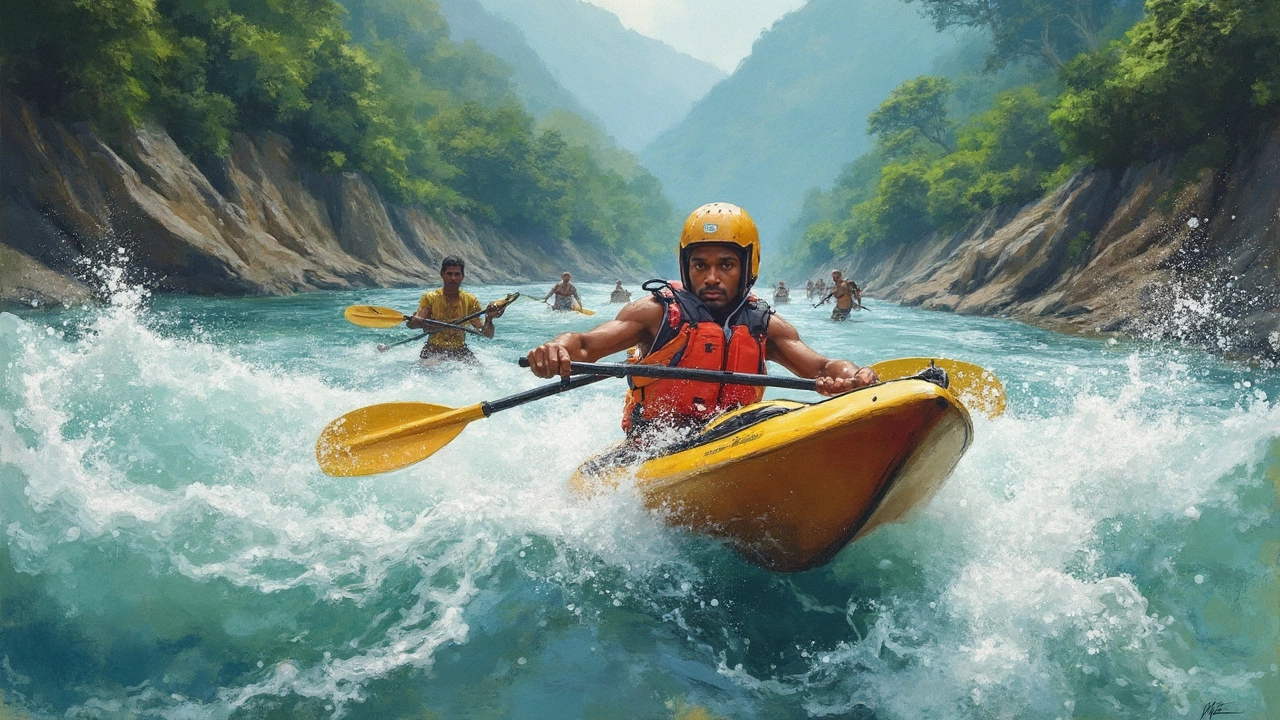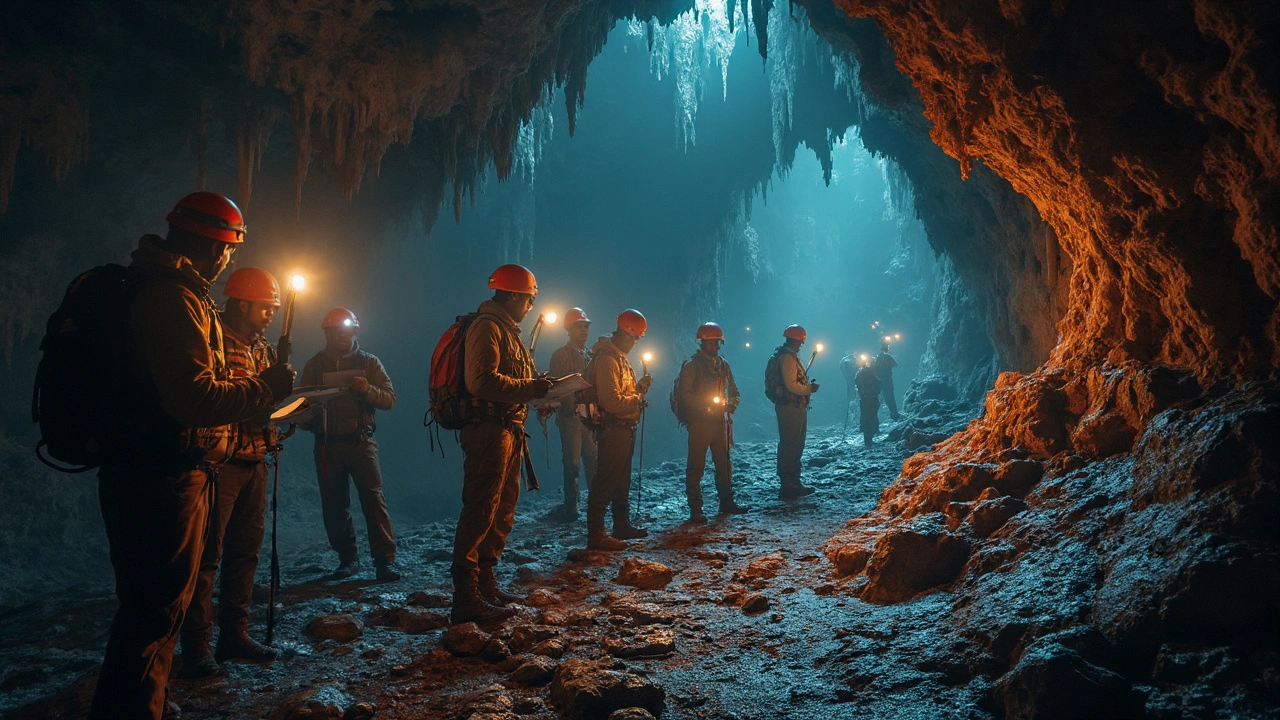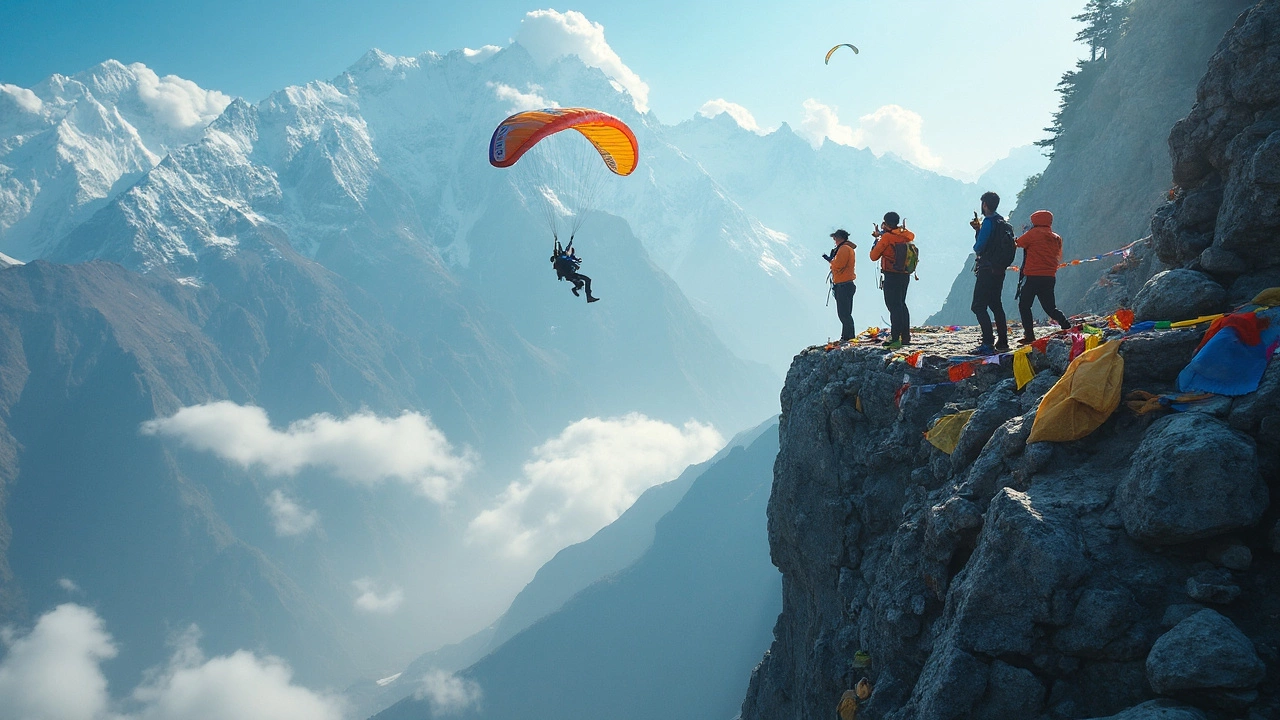If you think adventure sports in India is all about staring down a cliff or hanging from a rope, think again. The country throws every wild option your way—plunging off bridges, riding wild rivers, paragliding over mountains, even diving into caves nobody's named yet. Picking the "best" isn’t just about guts; it’s about what gets your blood pumping every time you think about it.
But here’s the real talk: Different sports work for different kinds of thrill-seekers. Some folks crave the first free-fall from a bungee jump, others can’t get enough of icy water smashing into their face on a raft. Trying to call one the ‘ultimate’ is like asking whether gulab jamun is better than jalebi. Doesn’t really work, right? Still, there are a few sports that just keep popping up—not just because they’re wild, but because India is the perfect place to try them.
What's making people lose their minds right now? White water rafting is climbing up the charts, not just for its not-so-obvious challenge, but also for the wild scenery—think wild Himalayan rivers and monsters of rapids that’ll shake every bone in your body. Trust me, once you’ve got the helmet on and your first rapid hits, it’s a different world. But hey, don’t just take my word for it. Each sport here has its own crew and stories—so before you jump headfirst, knowing what you’re signing up for can make all the difference. And that’s what I’m here to break down for you.
- What Counts as Extreme in India
- Head-to-Head: Top Contenders
- The Hype Around White Water Rafting
- What You Need To Know Before Diving In
- Choosing Your Own Wild Adventure
What Counts as Extreme in India
India doesn’t mess around when it comes to adventure sports. There's almost every kind of thrill you can think of—rock climbing in Hampi, scaling frozen waterfalls in Spiti, or even flying off a mountain edge in Bir Billing. But for a sport to be called ‘extreme’ here, it’s not just about crazy heights or breakneck speeds. It’s about pushing limits in places that actually test you, mentally and physically.
So, what actually makes something an "extreme sport" in the Indian context? Here are a few must-haves:
- Puts you in real physical or environmental risk (like narrow gorges or wild Himalayan rapids)
- Needs skill, sharp judgment, and guts, not just expensive gear
- Usually done outdoors where nature does its own thing—no AC gyms here
- Tons of unpredictability—river currents, sudden wind changes, rock falls
The authorities here aren’t just sitting back, either. The Indian Mountaineering Foundation and the Adventure Tour Operators Association of India (ATOAI) put strict rules and safety measures in place. They don’t want anyone making headlines for the wrong reason. According to a 2023 report from ATOAI, participation in adventure activities jumped by 46% across the country post-COVID.
“The rush for adventure sports in India is at an all-time high, mainly because more young folks want to step out and create their own stories. But real adventure always comes with real responsibility,” says Maninder Kohli, founding member of the Himalayan Club.
Just to see the sheer variation, check out this breakdown of popular adventure activities and their typical hot spots:
| Extreme Sport | Main Locations | Peak Season |
|---|---|---|
| White Water Rafting | Rishikesh, Zanskar, Teesta | March-June |
| Bungee Jumping | Rishikesh, Goa | Oct-March |
| Paragliding | Bir Billing, Kamshet | Oct-June |
| Rock Climbing | Hampi, Badami | Nov-Feb |
| Caving (Spelunking) | Meghalaya | Nov-April |
Bottom line? Extreme sports in India are about the raw challenge, the wild settings, and the personal risk. The thrill isn’t just in doing something wild—it's about testing yourself in places most folks never even see on a map.
Head-to-Head: Top Contenders
Adventure sports aren’t a one-size-fits-all deal. India has a lineup full of heavy hitters, each promising a different flavor of adrenaline. Want to know what’s tops? Here’s a clear look at the big players, how they work, and what you can really expect if you sign up.
Bungee jumping might grab the headlines—India’s highest jump is at Rishikesh, with a 83-meter drop that’s drawn thousands since 2010. If flying is your thing, paragliding hubs like Bir Billing (also famous for hosting international paragliding cups) make getting off the ground pretty routine. And don’t forget about white water rafting, especially in Rishikesh, Zanskar, and Teesta rivers. Some routes are open year-round, with rapids labeled up to Grade IV—enough to flip almost anyone, literally.
If roaring engines get your pulse up, Manali-Leh’s mountain biking trails aren’t for weekend warriors. Speaking of heights, rock climbing in Hampi and Ramnagaram is on the map globally for good reasons—tough boulders and a massive climbing community. And of course, scuba diving in the Andamans puts you face-to-face with coral walls, turtles, and sharks—not your average swim.
- Extreme sports India: Bungee Jumping, White Water Rafting, Paragliding, Rock Climbing, Scuba Diving, Mountain Biking
- Rishikesh is the epicenter for bungee and rafting
- Bir Billing is Asia’s top spot for paragliding
- Andaman Islands are diving central with PADI-certified schools
Want some perspective? Check out the table below for a straight-up comparison:
| Sport | Top Location | Season | General Cost (₹) | Skill Level Needed |
|---|---|---|---|---|
| Bungee Jumping | Rishikesh | Sept–June | 3,500–4,000 | None |
| White Water Rafting | Rishikesh | Mar–June, Sept–Nov | 800–2,000 | Basic swimming |
| Paragliding | Bir Billing | Oct–June | 2,500–3,000 | None |
| Scuba Diving | Andaman Islands | Oct–May | 4,000–7,000 | Swimming helpful |
| Mountain Biking | Manali–Leh | June–Sept | 10,000+ (trips) | High fitness |
Every sport here means signing up for something wild. Before choosing, think about what gets you excited—and be honest about your fitness level. Plenty of people pick bungee since it’s a one-time leap of faith, but riding rapids or flying like a bird each has its edge. No matter what, India gives you options with real bite.

The Hype Around White Water Rafting
If you ask seasoned thrill-chasers about white water rafting in India, their eyes light up. It’s not just for the hard-core adventure folks anymore. Rafting is blowing up because it packs the adrenaline hit with wild Himalayan scenery you’d never see on foot or from a car.
The almighty Ganges in Rishikesh is the go-to spot—easily one of the fastest-growing adventure hubs in India. The Grade III and IV rapids here aren’t for the faint of heart, and rafting season lasts from September to June before the monsoon arrives. In Ladakh, the Zanskar and Indus rivers take things even wilder, winding through canyons that look straight out of a sci-fi movie. Sikkim, Arunachal Pradesh, and even the south’s Kali River are pulling in bigger crowds every year too.
"The first time you hit Roller Coaster or Golf Course rapids in Rishikesh, your pulse triples. That’s when people get hooked." — Amit Chowdhury, adventure sports consultant
Here’s a quick peek at how Indian rafting destinations stack up:
| River | Main Location | Grade of Rapids | Season |
|---|---|---|---|
| Ganges | Rishikesh, Uttarakhand | II-IV | Sept-June |
| Zanskar | Ladakh | III-IV | June-Sept |
| Siyang | Arunachal Pradesh | III-V | Nov-April |
| Kali | Karnataka | III-IV | July-Sept |
But what’s got everyone buzzing is how accessible rafting has become. You can sign up for a day trip, or even go all-in for a multi-day expedition camping along isolated banks. Costs can range from INR 800 for a short trip to INR 15,000+ for all-inclusive expeditions—pretty doable when you compare it to some other extreme sports.
- Wear proper gear—never skip the lifejacket or helmet.
- Listen to your guide—seriously, they know how to keep you safe when the river acts up.
- If you can’t swim, let them know up front. Most organizers have extra safety setups.
This isn’t just about fighting currents and chasing thrills. Rafting is about teamwork and trust—you have to paddle in sync, even when your brain’s yelling ‘jump out!’ That’s the magic, and honestly, that’s why folks come back for more.
What You Need To Know Before Diving In
No matter how pumped you are to try extreme sports India style, ignoring the basics is where most beginners mess up. Safety isn’t just a boring lecture—think of it as the difference between bragging rights and a hospital bill.
- Gear matters, big time: Make sure all your stuff is legit and checked by certified guides. Don’t cut corners, especially with helmets and harnesses.
- Read the river (or the weather): For rafting or paragliding, conditions change fast. The Ganga in Rishikesh is wildest from March to June, while paragliding in Bir-Billing is best October to December.
- Listen to your body: Some sports require more than guts. Bungee jumping asks for a normal blood pressure, and rafting doesn’t mix well with a weak back.
- Respect your guide: Your instructor knows the risks and the tricks. If they say it’s too rough for today, believe them.
- Check your insurance: Many policies skip covering adventure sports by default. Read that fine print.
A quick look at what to expect on the ground:
| Sport | Best Location | Min. Age | Skill Needed |
|---|---|---|---|
| White Water Rafting | Rishikesh, Uttarakhand | 14 | Basic fitness, swimming helps |
| Bungee Jumping | Goa, Rishikesh | 18 | No medical issues |
| Paragliding | Bir-Billing, Himachal | 12 | Comfort with heights |
One last thing—don’t get pressured by friends or social media. Everyone hits their thrill point at their own pace. If your gut says “wait,” listen to it. The mountains and rivers aren’t running away.

Choosing Your Own Wild Adventure
You want to dive into adventure sports in India, but how do you decide which one fits you best? It’s not about copying what your buddy did last summer. Start with figuring out how much risk you’re actually into. Are you cool with getting tossed around by raging river water, or do you need your feet—sort of—on the ground while you run off a hill in a paraglider? Be honest, because nobody has fun when they’re white-knuckled all the way through an activity.
Location is key. For example, Rishikesh is famous for bungee jumping and white water rafting, thanks to the Ganga’s rapids and purpose-built jump spots. But if flying above tea estates is more your style, Bir Billing in Himachal Pradesh is the top spot for paragliding. The point is, matching your sport to its best location in India makes a huge difference in the experience.
Budget matters too. Some of these adventures cost more than a short holiday. Bungee jumping in Rishikesh can set you back around ₹3,500 per jump, while a rafting package might run ₹1,000-₹2,500. Paragliding in Bir Billing usually starts at ₹3,000. Do your homework—packages often include gear, guides, and sometimes even food and transport.
You’ll also want to check fitness levels. Rafting and mountain biking need stamina and a bit of muscle, while bungee jumping tests your nerves more than your biceps. Most adventure organizers ask you to sign a waiver saying you’re fit enough, but they’re not your doctor—a quick health check first is just smart.
- Check the season: Monsoon can close rivers, but winter is epic for paragliding.
- Watch for legit operators: Always look for certified instructors and proper safety gear.
- Don’t skip the briefing. Even if you’re a pro, the local landscape and rules change things.
And don’t ignore travel insurance. It sounds boring—until you actually need it. For the true extreme sports India experience, being smart means you’ll enjoy the ride and come back for round two. Go with what excites you, not what you think you should try. After all, your best adventure story is the one you actually want to tell.
